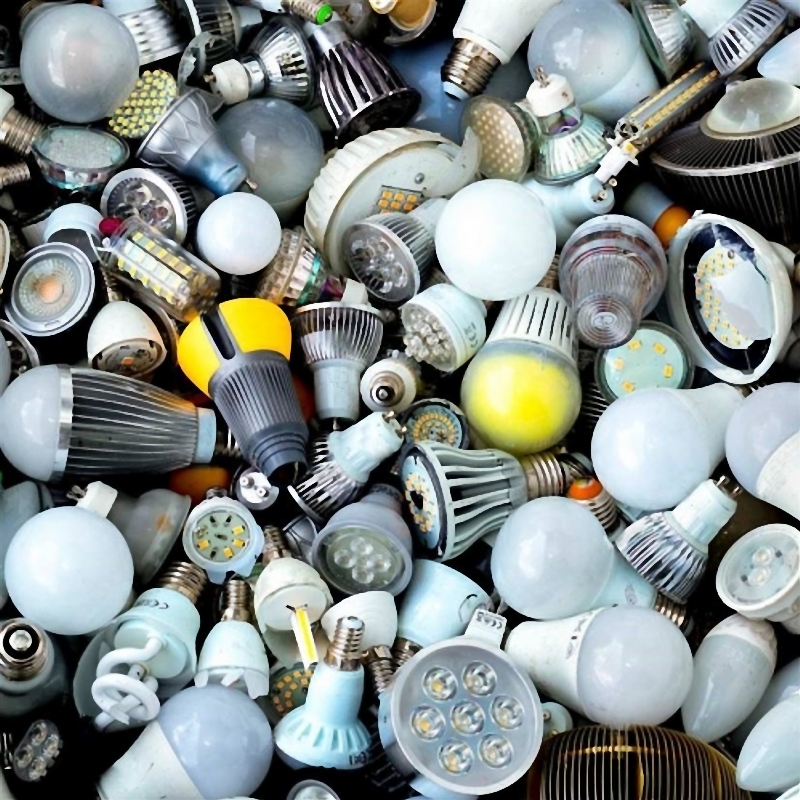NEWS
NEWS
The Coming Challenge For Handling LED Lights Waste
23-05-2018
After nearly ten years, LED lights still bring about a small part of waste in Europe, so they appear to work without problem for a long time. Recycling them could be a different matter.
If the waste stream indication is seen, LED lamps would appear to be up to the claims for longevity: In Europe they are still taking less than 2% of the waste.

Most of the lamps going into the recycling collections today are traditional lights, not LED lights.
That number comes from Eucolight, a group of organizations that monitor collection and recycling of LED lamps and other traditional lighting products across Europe. Between them, they say that can handle 79% of the lamps collected in the 18 countries in which they operate.
According to the report from Eucolight, LED lights represent less than 2% of the waste stream nowadays, with their long life.
A couple of years have passed since LED lights started entering the mainstream — long enough for them to turn up in much greater proportion than 2% if they were failing earlier. Producers informally made claims of 20-year-and-longer lifetimes although it is hard to find a warranty over 5 years, and many are 3 years actually. Product labeling typically declares ranges of 15,000–30,000 hours, which at 3 hours a day means loosely to between 14 and 28 years.
So while consumers still have not used enough LED lamps for long enough to prove the long-life claims, the waste stream provides enough effective evidence that LED lights are generally working pretty well so far.
But there is another bad estimation. LED lights will take about 30–40% of the waste within the next 10 years, and as that happens, the industry will have a bigger job to do in recycling them than what it has faced in the past with simpler designs of traditional lights.
Currently, more than 90% of fluorescent tube material is recovered today in the UK, LED lamps construction will make it difficult up to even 50%.
LED lights accept much more innovation in the way product is made. But the complexity of product comes at a cost when it comes to recycling. They are bonded together, often with glues and foams that make separation of them very difficult. There are all types of materials in there from plastics, glass, ceramics, aluminum, copper,PCBs,etc.
Eucolight believe that they will have to face the big challenge in the coming years, and they are looking for more positive solutions to it.
If the waste stream indication is seen, LED lamps would appear to be up to the claims for longevity: In Europe they are still taking less than 2% of the waste.

Most of the lamps going into the recycling collections today are traditional lights, not LED lights.
That number comes from Eucolight, a group of organizations that monitor collection and recycling of LED lamps and other traditional lighting products across Europe. Between them, they say that can handle 79% of the lamps collected in the 18 countries in which they operate.
According to the report from Eucolight, LED lights represent less than 2% of the waste stream nowadays, with their long life.
A couple of years have passed since LED lights started entering the mainstream — long enough for them to turn up in much greater proportion than 2% if they were failing earlier. Producers informally made claims of 20-year-and-longer lifetimes although it is hard to find a warranty over 5 years, and many are 3 years actually. Product labeling typically declares ranges of 15,000–30,000 hours, which at 3 hours a day means loosely to between 14 and 28 years.
So while consumers still have not used enough LED lamps for long enough to prove the long-life claims, the waste stream provides enough effective evidence that LED lights are generally working pretty well so far.
But there is another bad estimation. LED lights will take about 30–40% of the waste within the next 10 years, and as that happens, the industry will have a bigger job to do in recycling them than what it has faced in the past with simpler designs of traditional lights.
Currently, more than 90% of fluorescent tube material is recovered today in the UK, LED lamps construction will make it difficult up to even 50%.
LED lights accept much more innovation in the way product is made. But the complexity of product comes at a cost when it comes to recycling. They are bonded together, often with glues and foams that make separation of them very difficult. There are all types of materials in there from plastics, glass, ceramics, aluminum, copper,PCBs,etc.
Eucolight believe that they will have to face the big challenge in the coming years, and they are looking for more positive solutions to it.


